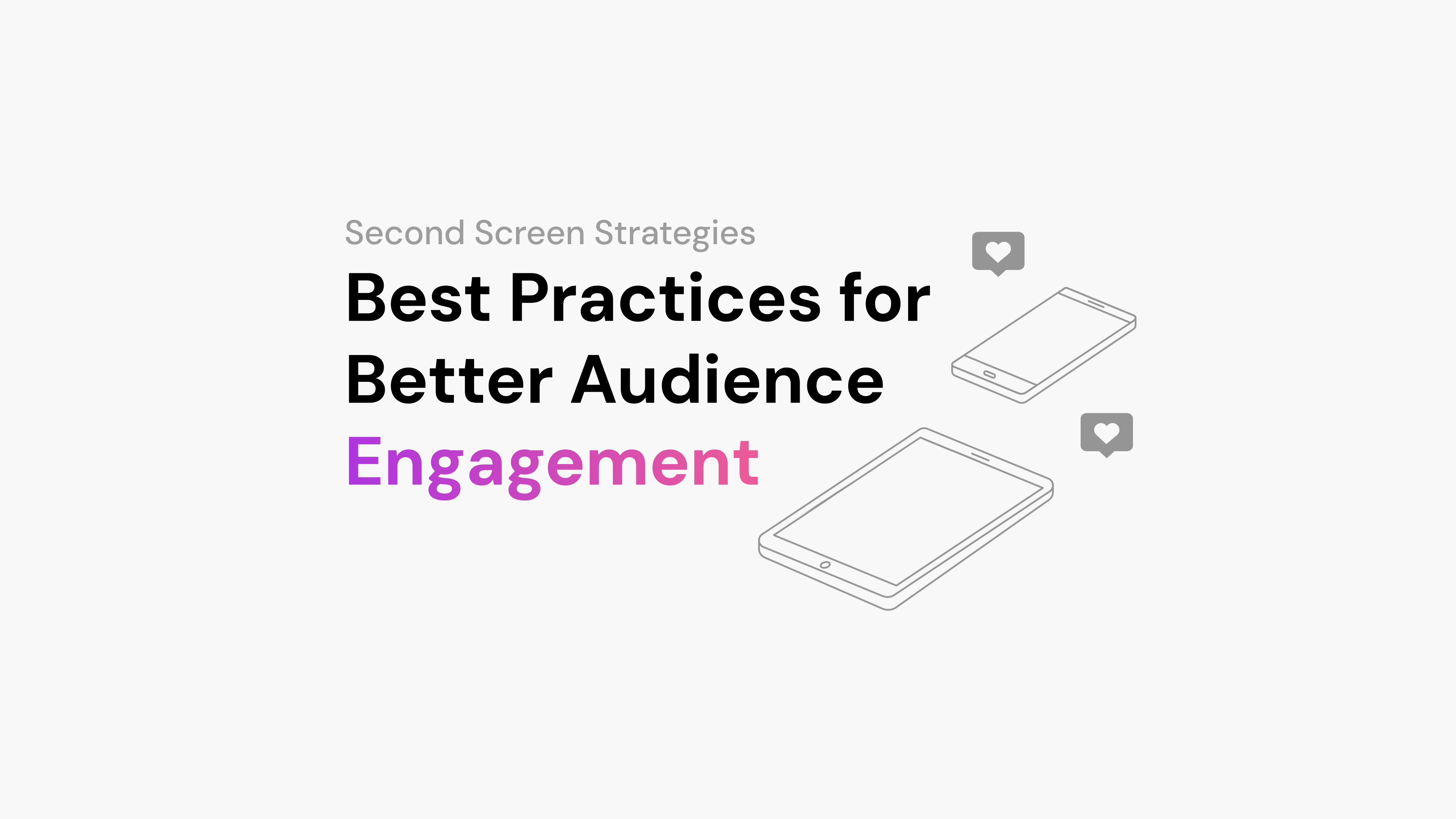



Publishers have long earned most of their revenue from paying subscribers and advertising. Publishers have innovated new technologies to lift advertising revenue and entice subscribers. Despite these efforts, publishers have lost tremendous revenue to digital advertising platforms. Below are some winning strategies publishers have taken to evolve their revenue streams.

Start With Maximizing Advertising Revenue
In the short term, publishers can earn more advertising revenue because dollars are shifting away from social media. Twitter’s much-publicized difficulties under Elon Musk’s leadership – chaotic layoffs, increased inappropriate content, and more – have advertisers seeking new opportunities. For publishers committed to quality content and long-term audience engagement, there is a tremendous opportunity to win advertisers to your platforms, especially if you can offer brand-safe environments.
While significant, winning advertising dollars from other platforms will only take you so far. It’s also essential to take a hard look at the publishing business model.
Why Now Is The Right Time To Invest In Revenue Diversification
There are four reasons publishers need to invest resources into revenue diversification.
1. Generative AI Opens New Threats And Opportunities
The boom in generative AI technology poses many challenges. Governments and companies are concerned about AI safety. However, publishers are uniquely positioned to succeed with AI for a few reasons. First, publishers know their audiences deeply to direct generative AI tools effectively. Second, publishers have robust quality control mechanisms to verify sources and maintain high standards.
To discover more about how generative AI can lift publisher revenue, see our post: 5 Use Cases for Generative AI in Publishing Right Now. With editorial oversight, generative AI can dramatically increase your output and boost your ad revenue stream.
2. Economic Worries May Hurt Traditional Revenue Sources
While fears of a 2023 recession are easing, elevated inflation and interest rates continue to pressure many consumers and companies.
These economic concerns are already starting to impact the media industry. According to a June 2023 CNBC article: “Over the last six months, higher prices have led nearly 80% of consumers to cut spending on nonessential goods, like entertainment, home decor, clothing, appliances and more.” That reduced spending will likely cause advertisers to rethink and reduce their advertising budgets.
Many consumers are already thinking about cutting back on their spending. A National Research Group study found that 28% of consumers plan to decrease their subscriptions in the next six months. While the NRG report is focused on digital media subscriptions like Netflix, consumer cost-cutting measures may spread to publishers.
In addition to consumers, advertiser spending is expected to decline in several categories next year. MarketingProfs points out that advertising spending is forecasted to decline in automation, financial services, alcoholic drinks, and tourism in 2023.
3. Social Media Companies Retain Significant Audience Share
Large social media platforms like Facebook and Twitter have had a challenging 2022. Even Google, which earns most of its revenue from advertising, is looking for ways to improve efficiency. For creative publishers with valuable audiences, there is an opportunity to grow as ad budgets shift.
It would be foolish to write off social media companies and platforms entirely. TikTok, for example, has over 1.6 billion users (86 million in the US). The potential collapse of Twitter and troubles at Facebook don’t mean social media is over, just that the landscape will likely undergo massive shifts.
4. Generation Z and Millenials Are The Future of Audience Growth
Taken together, millennials and Generation Z represent the publishing industry’s future. As of 2022, these two generations represent approximately 42% of the US population (source: Statista). In other words, engaging Gen Z and Millennials is non-negotiable for publishers.
Many publishers are struggling to earn attention from these growing groups. The American Press Institute (API) found that one-third (31%) of Gen Z never check local news outlets, and 33% never check national news outlets. Further, Americans aged 16-40 overwhelmingly rely on social media to discover news. This suggests that engagement and loyalty to social media platforms may be higher than traditional news outlets, or it could suggest that social media platforms simply offer the interactivity and community that younger generations expect.
Evolving your digital presence to offer more interactive and social experiences is necessary. This innovation involves adding technology like Arena Live Chat to your website so that your audience can interact with each other. It also means making editorial changes, like creating more video content, including short-form videos.
To show what’s possible when revenue diversification is done well, let’s look at the New York Times.
Publisher Revenue Diversification Success: The New York Times

The New York Times has transformed itself into a digital media success story in the past few years. The news organization has pursued several revenue diversification strategies to succeed and is reporting that it has already surpassed its 2025 goal of 10M subscribers and total revenue greater than $2 billion. As of 2022, 80% of the company’s 10.98 million subscribers were digital-only.
The company’s digital success is supported by a robust diversification strategy that includes publishing, app, and game space acquisitions. Over the past few years, the company has acquired the following properties:
- The Athletic. The New York Times acquired this sports-focused publisher in 2022, which had 1.2 million at the end of 2021. The sports-focused publication covers over 200 clubs and teams as of 2022.
- Wordle. In 2022, the New York Times acquired Wordle, a word puzzle game website, for at least $1 million. Wordle, which launched in October 2021, had over a million users by January 20202, according to The Street.
- Audm. In March 2020, the New York Times acquired Audm, an app that offers long-form reporting and stories in audio format.
- Wirecutter. Founded in 2011, the shopping recommendations website was bought by the New York Times for $30 million in 2016. In 2021, a standalone Wirecutter subscription was priced at $5 per month or $40 per year.
These moves have added new capabilities, audiences, and revenue sources to the company that goes far beyond traditional news.
Revenue Diversification Options For Publishers
The following strategies represent new ways to offer value and generate revenue. These revenue streams are the lifeblood of niche digital properties. Adding one or more of these strategies to your strategy can be a game-changer.
1. Use Live Chat And Live Blog Experiences
Keeping your audience engaged on your digital platforms is vital. Audiences expect a fast and social experience thanks to the popularity of social media. Adding a live chat (or a live blog) to your website is a great way to meet those expectations.
These content experiences offer high rewards for the effort invested. You can create a live chat experience that creates additional advertising space on your website in less than an hour. Likewise, a live blog providing coverage on a trending topic can feature a mix of original content and social media updates. Live chat and live blog experiences keep audiences engaged longer, which means more advertising revenue.
2. Affiliate Marketing With Generative AI
Affiliate marketing means earning a commission when a person makes a purchase based on your recommendation. The Amazon affiliate program is the largest and best-known affiliate program on the market, but it is far from the only one. The industry is set to grow $14.3 billion in 2023 and generated $14.3 billion globally (over $5 billion in the US), according to Influencer Marketing Hub.
The Wirecutter, best known for publishing detailed reviews of products like kitchen appliances, electronics, and apparel, has most of its revenue from affiliate marketing.
3. Offer More Pricing Options With “Choose Your Own Price”
The rise of streaming services and losing interest in cable TV points to an opportunity for publishers: unbundling. Instead of offering a single paid subscription, look for ways to sell different tiers at different price points. Each option also unlocks new ways to increase the publishers’ advertising revenue. For example, some advertisers may be interested in digital-only, while others prefer omnichannel campaigns.
- National Geographic. This classic magazine is highly popular with Millennials (one-third of its subscribers are Millennials). National Geographic is also ranked number #1 among MRI-measured magazines for its Generation Z reach1. The publisher revenue stream comes from four distinct offerings: National Geographic Premium, Nat Geo History, and two child-oriented offerings. In addition, the publisher continues to offer print-only options as well.
- Single Website Subscription. Take the New York Times, for example. Subscribers can choose to subscribe to a single website like The WireCutter for $5 per month or access this publisher as part of the “All Access” subscription at a higher price.
- Ad Supported Pricing Tier. Streaming video services like Netflix, HBO, and Disney have positioned ad-supporting pricing as an option. These more affordable options are a way to grow your content revenue stream for consumers looking to cut costs. According to The Verge, Netflix’s ad-supported tier has 5 million subscribers as of 2023.
4. Ecommerce

Direct product sales beyond a subscription are becoming more common for news publishers. For publishers with a passionate fan base, putting your logo on an everyday item is appealing. Let’s look at a few ways publications leverage ecommerce to supplement their content revenue stream.
- UFC. According to Gen Z’s Favorite Brands report, UFC is one of the most popular sports brands for Gen Z. It is viewed more positively than the NBA and NFL brands. The UFC (Ultimate Fighting Championship) is a media property with a significant online ecommerce presence. UFC’s ecommerce offerings include merchandise inspired by its best-known participants like Connor McGregor, Izzy Adesanya, Alexa Grasso, and Holly Holm.
- Morning Brew. The Morning Brew, a news email newsletter, offers playful apparel (e.g., Future Rich Girl onesie) and professionally oriented products (e.g., Microsoft Excel function guides and other MBA-style business education offerings).
- Sports Illustrated. The SI Shop offers a wide range of products, including Sports Illustrated products and a fan shop (i.e., products for pro football, pro baseball, college sports, and pro hockey).
Directly selling products may not be a good fit for every publisher. Recommending products (i.e., affiliate marketing) to your audience is another way to diversify your reliance on an ad revenue stream.
5. Digital Audio

Podcasts like Serial, This American Life, and The Daily built significant listener audiences. Recording and producing a podcast requires relatively minimal equipment ($500 or less on equipment). Some publishers, like the BBC and NPR, repurpose existing media to podcast form. That is an intelligent way to increase the publishers’ advertising revenue from your existing content.
Instead, the key draw to a podcast is the quality of the content. The content doesn’t have to be scripted in advance to succeed, either. Many of the most successful business podcasts, like Mixergy and Entrepreneurs on Fire, are interview based.
Creating a podcast creates a new revenue stream for publishers. Podcasting ad revenue was up 26% year over year, according to the Interactive Advertising Bureau (IAB), in 2022. From a revenue viewpoint, the most successful podcast genres include comedy, sports, and society & culture.
Diversify Your Revenue Stream With Arena
Publishers like Globo, Fox Sports, and the Japan Times already use Arena to grow their audiences and advertising. Discover how you can increase publisher revenue with Arena’s solution for media.



